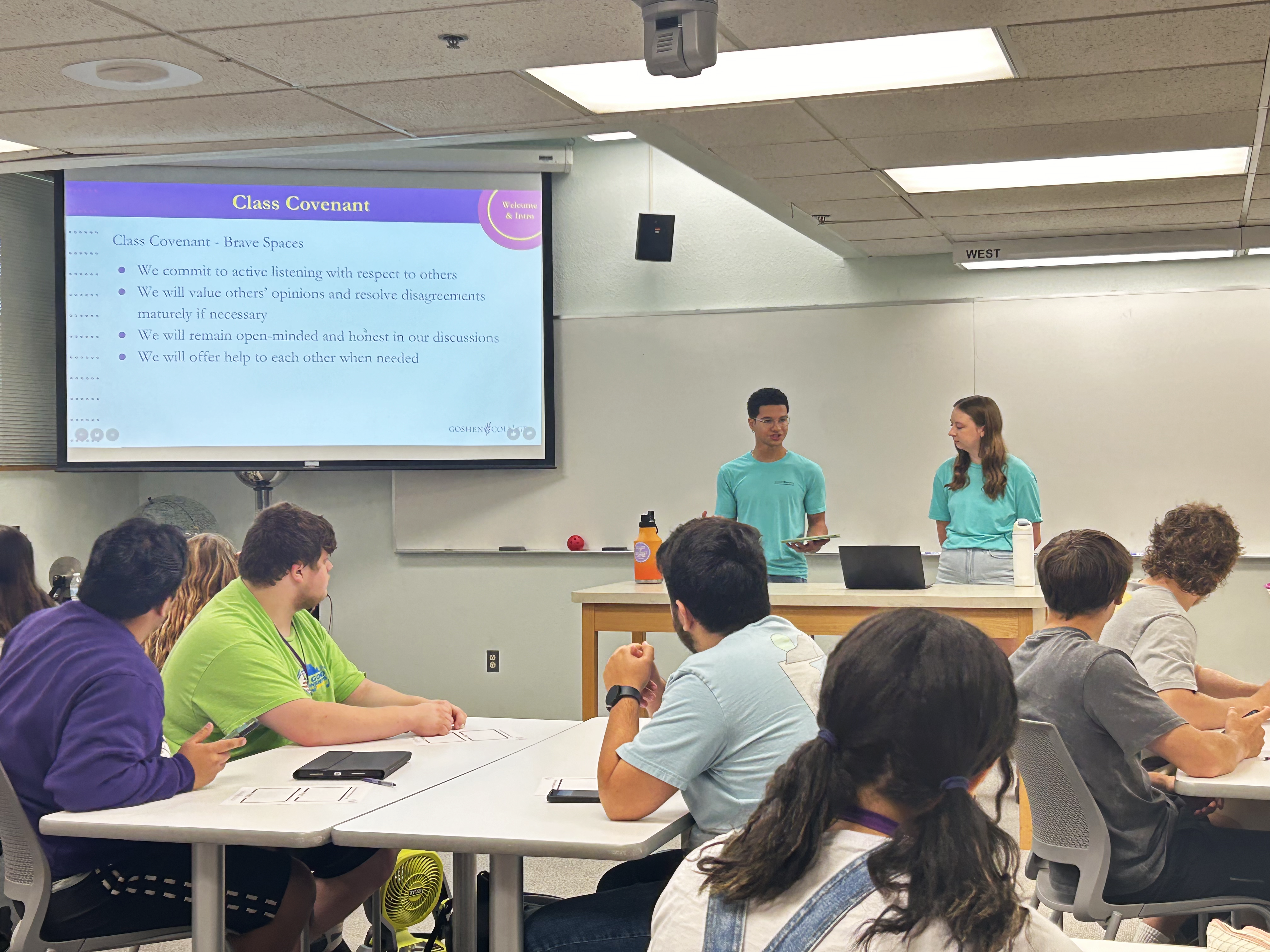Goshen College’s Prevention Intervention Network is a program that seeks to equip bystanders with tools to prevent and intervene in the context of sexual violence.
The new curriculum aims to include commuter students as well as students in the LGBTQ+ community.
—
Each year, PIN members collaborate to present sexual violence preventative training for first-years in their Identity, Culture, and Community classes.
This year, PIN implemented a new curriculum for their bystander training. PIN co-advisor, Emily Hahn, who also serves as program director for interpersonal violence prevention, education and advocacy, created this new curriculum over the course of the past year in collaboration with Yoder.
Hahn and Yoder used a process of student input groups and data about interpersonal violence to craft a more accessible training for first-year students.
GC received the Department of Justice Office on Violence Against Women’s campus program grant in 2022, which enabled the creation of the new curriculum.
“It started in one of the trainings we have through the grant,” said Hahn. “We created an outline, then got feedback and narrowed it down.”
Hahn attended a curriculum event through “Futures Without Violence” where she was able to meet with a national educational curriculum specialist who helped connect the final dots.
The main motivations for updating the curriculum were advancements in the field and the lack of specific relevance to GC students in the previous iteration.
“There has been evidence that our approaches for prevention have increased knowledge, but have not necessarily resulted in a decrease in actual instances of harm,” Hahn said.
The consensus across PIN leadership was that the old curriculum was outdated and not reaching GC students in the most productive manner.
Emma Gingerich, a fourth-year history major and PIN leader, said “The old curriculum had some graphic examples. There was an exercise that was supposed to build empathy but ended up feeling heavy, possibly isolating some people from the full experience.”
The new curriculum strives to challenge students without triggering them, as victim-centered education is important to GC and PIN.
Another thing this curriculum aims to do is simplify the material presented to make it more easily digestible.
Gingerich said that the new curriculum “focuses on distinctions between direct and indirect interventions rather than intervening or not intervening … it assumes everyone is an active bystander.”
A big motivation for Yoder and Hahn was to create this new curriculum around the GC student demographics. The past curriculum was centered around residential students and campus party culture.
While those scenarios are useful and do exist on campus, Yoder and Hahn wanted to address other parts of campus life in the new curriculum.
As stated by the two, residential and heterosexual students do not represent all of GC’s student body. The new curriculum aims to include commuter students as well as students in the LGBTQ+ community.
“If people can see themselves, they may be more likely to contribute,” Hahn said.
Gingerich and Hahn both expressed excitement to be a part of this new project for the first-year presentations.
“It’s exciting being part of this curriculum because it feels like we’re trying to normalize being an active bystander,” Gingerich said.
Hahn is awaiting the reactions in great anticipation. She is excited to “see how it was received” and “how we can strengthen things.”
Regarding the interactive portion of the presentation, Marin Kauffman Smith, a first-year said, “In my class everyone seemed very involved, a lot of people including myself were slightly shy to respond in class, but poll-wise everyone was engaged.”
Anton Alstrom-Brookhyser, a first-year, said, “I was surprised at how high the stats were for assault, it brought awareness to me.”



